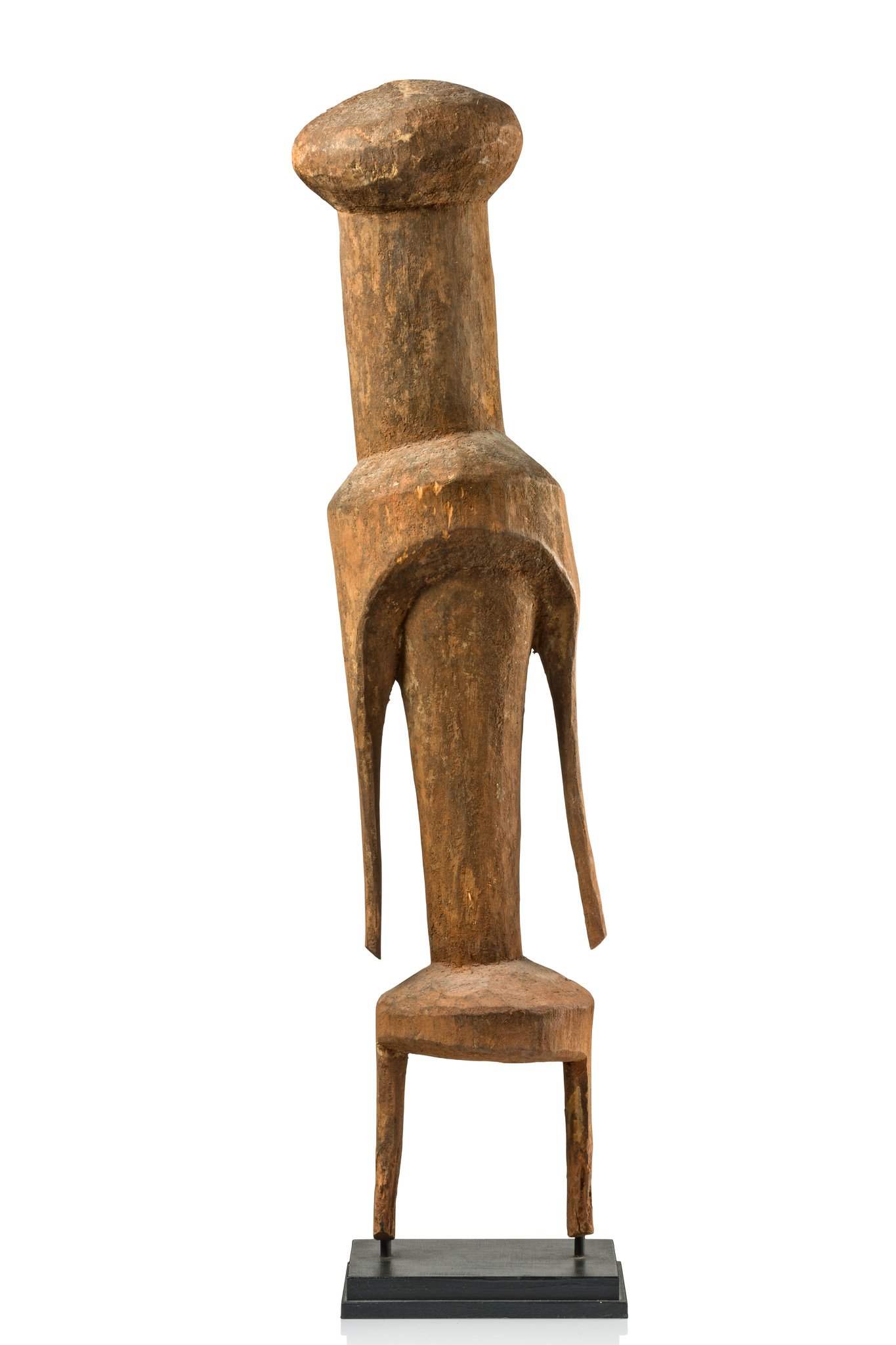Shrine figure "sakap tchitcherik" (pl. "tchitcheri") · Togo, Moba · ID: 3049412
Ron Mansveld, Maassluis, The Netherlands
Description
wood, base
According to Mullen Kreamer “tchitcheri” fall into three distinct categories, small (“yendu tchitcheri”), medium (“bawoong tchitcheri”), and large (“sakap” / “sakwa tchitcheri”), each size corresponding to a special function.
“Bawoong tchitcheri” were placed at household shrines. The diviners decided when such a figure should be carved and “prescribed” it to clients who were plagued with family problems such as diseased livestock or lack of children. It was also he who determined which ancestral spirit should be represented by the figure and thus served as an intermediary to the gods. The “bawoong tchitcheri” represent fairly recent ancestors, usually fathers, mothers, grandfathers, or grandmothers of compound heads.
The large “sakap tchitcheri” represent and are named after ancient clan ancestors of particular districts, villages, or sections of villages. In earlier times, they are said to have been associated with hunting. When this lost its importance, their responsibility shifted to bringing about successful harvests.
The object Shrine figure “sakap tchitcherik” (pl. “tchitcheri”) with the object ID 3049412 was part of the auction 99th Auction on November 12, 2022. The object with the lot number 256 achieved a sales price of EUR 1,350 with an asking price of EUR 1,200.
You can find more Figures and other popular object types on our related topic pages. You may also be interested in our page on African art.
Comparing literature
Christine Mullen Kreamer, "Moba shrine figures", in: African Arts, February 1987, Vol. XX, No 2, p. 52-55

